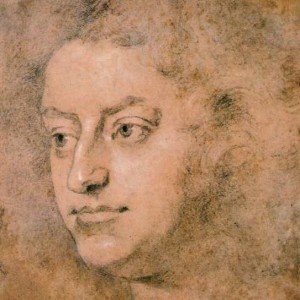Previous research
‘New light on Purcell’s early overtures’
Early Music, 37 (2009), 647-55

Purcell’s early overtures, found in the manuscripts Yale University, Beinecke Rare Book and Manuscript Library, Osborn 515 and London, British Library, R.M.20.h.9, are discussed within the context of a broader picture of violin-band music in London in the 1670s.
More details
‘The instrumentation of English violin-band music, 1660–1685’
PhD thesis, The Open University, 2010
The great flourishing of English violin-band music composed for use at court and in the theatres during the reign of Charles II has received almost no scholarly attention other than in Peter Holman’s Four and Twenty Fiddlers (1993). In this thesis, the physical make-up of the principal sources is examined for the first time, their nature, date and purpose is suggested and their relative authority is assessed.
More details
The history of violin bands in Europe spans the seventeenth century in the form of an arch: at the beginning of the century violin bands were few in number, by the middle of the century their popularity was at its peak, and at the close of the century, most violin bands had been replaced by orchestral ensembles. The rise of the violin band was due principally to its effectiveness as an indication of wealth and status, a role epitomised by the band at the French court, the Vingt-quatre violons. Charles II heard this ensemble first hand during his exile in the 1650s and his enlargement of the band at the English court following his restoration to the throne in 1660 was clearly a response to his experiences in France.
The specific purpose of the thesis is to examine a theory put forward by Peter Holman, in which he suggested, on the basis of an examination of the music of Matthew Locke, that the Twenty-Four Violins changed from the use of violas on the second part to the use of violins, sometime in the early 1670s, and that this change was the result of Italian influence. Locke’s writing for violin band is compared with that of his colleagues, John Banister, Robert Smith and Pelham Humfrey, and Holman’s theory, and the assumptions on which it is based, are tested against the evidence of this broader context.
It is suggested that if a change did take place, it was not to an Italianate style of equal writing for the second part, but to an intermediate style, peculiar to English music, which had the subordinate nature of a viola part but the range of a violin part. The dating of repertoire by Smith and Banister indicates that this style was employed by at least 1671, but other evidence, both musical and historical, appears to contradict the interpretation that there was a change in instrumental practice at this time and alternative theories are explored.
Reviews
‘Musical London, c.1700: from Purcell to Handel’, CD review in Eighteenth-Century Music, 9/2 (2012), 282–4.
‘Lawes Manuscripts in the Witness Box’, review of John Cunningham, The Consort Music of William Lawes, in Early Music, 39 (2011), 267–9.
‘Instrumental Portraits’, CD review in Early Music, 38 (2010), 466-9.
‘William Croft: Complete Chamber Music’, review of Musica Britannica, vol.88, ed. H. Diack Johnstone, in Eighteenth-Century Music, 7/2 (2010), 295–7.
‘Thomas Roseingrave: Complete Keyboard Music’, review of Musica Britannica, vol.84, ed. H. Diack Johnstone and R. Platt, in Eighteenth-Century Music, 5/2 (2008), 260-63.
Academic training
2005-09 PhD Research Student, The Open University, ‘The instrumentation of English violin-band music, 1660-1685’, supervised by Prof. Donald Burrows and Dr David Mateer
1993-94 MPhil (Musical Composition), Trinity College, Cambridge, with Robin Holloway
1990-93 BA, Musicology, Trinity College, Cambridge (1st Class)
Conference participation
2014 Member of the Academy of Ancient Music in keynote session of Performance Studies
Network Third International Conference organised by the University of Cambridge’s Centre for Musical Performance as Creative Practice (CMPCP) on 19 July
2013 Performance practice workshop in ‘Chains of Gold: Rhetoric and Performance in the verse anthem’, organised by the Centre for Research in the Arts, Social Sciences and Humanities (CRASSH), 2 March
2013 ‘The Humfrey Puzzle’, informal symposium at Oxford University, organised by Andrew Parrott to celebrate the 40th anniversary of the Taverner Consort
2010 ‘The Tempest encompassed: editing Locke’s other theatre suites’, 14th Biennial International Conference on Baroque Music, Belfast
2008 ‘“Oxford” sources of Restoration violin-band music’, 13th Biennial International Conference on Baroque Music, Leeds
